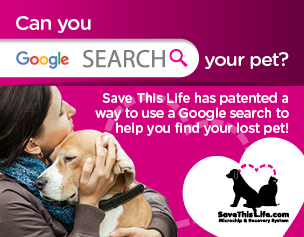OSHA's General Duty Clause and Workplace Safety Programs

By Kay Knox, Manager, Regulatory Affairs, Covetrus
OSHA regulations have been drafted to help ensure all employees, regardless of the workplace type, are safe from harm and risk of injury. OSHA does not specifically address animal safety programs but businesses related to the animal health industry, including veterinary practices, must implement safety measures designed to protect their employees.
Following specific OSHA regulations often appears to be a hopeless task. It’s certainly complex. In all honesty, the regulations have not been changed dramatically since the Occupational Safety and Health Administration came into being; however, the interpretation of those regulations often seems to be a moving target. Tracking down specific rules applicable to veterinary medicine is difficult.
A recent review of www.osha.gov for the letters of interpretation using the terms “veterinary”, “veterinary medicine”, “equine/horse”, “dog/canine”, and “cat/feline” proved there is very little information specifically relating to any species of animal.
This does not mean that a veterinary practitioner is not compelled to comply with OSHA regulations. The same rules regarding the Hazard Communication Program, OSHA logs, sharps, and basic safety precautions apply for all businesses and all types of veterinary practices.
Employer Obligations
OSHA regulations are written to provide guidance in general terms. OSHA’s intent is to cover all types of businesses and occupations within one legal document. The regulations cannot cover specifics for everything and the administrators were well aware of this fact. In order to cover all bases, the OSHA regulations include what is commonly known as the “General Duty Clause” which states that each employer shall:
• Furnish to each of his employees a place of employment which is free from recognized hazards that are causing or are likely to cause death or serious physical harm to his employees.
• Comply with OSHA Standards.
• Comply with OSHA standards and all rules, regulations, and orders which are applicable to his own actions and conduct.
In simple terms, this means no employer may knowingly put an employee at unnecessary risk. Employers must provide a safe work environment for all employees. This obligation is open-ended because it is designed to protect employees in situations where there are no established standards. Thus, the employer’s potential liability under the Act is also open-ended.
It’s much easier to comply with and correct specific requirements that apply to known hazards than it is to anticipate and correct hazards that have not yet been officially identified by OSHA. The General Duty Clause highlights the value of developing workplace safety plans which identify potential hazards which are unique to your workplace.
A violation of the General Duty Clause exists if it can be shown that a hazard likely to cause death or serious injury existed, the hazard was foreseeable, and employees were exposed to the hazard. In addition, knowledge that the hazard existed or was recognized by you, the industry, or common sense could also be considered a violation unless the employer has instituted an effective workplace safety program addressing these hazards.
| All workplace safety programs should be well documented. In the mind of OSHA or any regulatory agency, if it isn’t written down, it doesn’t exist. Written plans offer proof of hazard awareness and demonstrate the employer is indeed making attempts to comply with OSHA regulations. |
Workplace safety programs must include identification of the workplace hazards. In addition, methods to prevent or minimize risk to the employee, and training employees must be implemented. Hazards associated with a veterinary practice would include chemical exposure (disinfectants, radiology solutions, pharmaceuticals, etc.), exposure to ionizing radiation and zoonotic diseases, allergic reactions to animal dander, and physical hazards associated with working around animals. Electrical hazards, slip, trip, and fall hazards, muscle strains, and road hazards may also need to be included in the assessment. This list could be endless and will continually evolve.
Once the hazards have been identified, one must then address methods to prevent or minimize the risk to the employee. This could include use of engineering and procedural controls, safety equipment and/or use of personal protective equipment. Engineering controls may include the use of a platform scale used for weighing patients rather than manually lifting them and stepping on a bathroom scale. Procedural controls are essentially a review of “How we do it” and might include policies requiring two people lifting large patients onto a table, or handling a fractious cat. Lead aprons, gloves, and hearing protection are examples of personal protective equipment (PPE).
Everyone has favorite pieces of equipment and tools in veterinary medicine, but when making selections for the employees, keep in mind the size of the individual who will use that piece of equipment or tool. Devices easy for a 6’ man to work with may prove to be impossible for a 5’ woman to manipulate. Safety equipment is useless if it doesn’t fit or work for the user.
Employee Training
Employee training is critical in any medical field but there are special issues associated with the veterinary practice. Knowledge of animal behavior, safe handling techniques, and basic “animal-sense” may come naturally to some. There are many people with a tendency to want to bypass safety measures which could result in injury to the patient or people. For those, additional training may be necessary.
All employees need to know how to use equipment properly and they must be informed of hazards associated with that device. This would include radiation machines and lasers. Employees need to be informed/reminded of the risk of zoonotic diseases and should be required to follow basic hygiene principals as defined in your safety plan.
Pregnant employees need to be aware of fetal risks associated with veterinary medicine and animals. This would include exposure to certain pharmaceuticals, zoonotic diseases, and physical issues of working with veterinary patients. Exposure to radiation and anesthetic waste gases are of concern to everyone but more so to the pregnant employee. If ambulatory vehicles are involved, road safety must also be included in the training program.
All workplace safety programs should be well documented. In the mind of OSHA or any regulatory agency, if it isn’t written down, it doesn’t exist. Written plans offer proof of hazard awareness and demonstrate the employer is indeed making attempts to comply with OSHA regulations. Training programs can be presented classroom style, written form, or as hands on, supervised practice sessions. Whichever form of training selected, it must be specific to the workplace and it must be EFFECTIVE. In all cases, the employee should be required to sign a document stating s/he participated with the training and agrees to comply with the safety training principles and practices of the workplace.
The instructor should also document the training occurred, when it occurred and identify the topics which were covered. Refresher training can occur on a regularly scheduled basis as required by OSHA regulations but should also reccur whenever an employee doesn’t appear to understand or begins to take shortcuts which could put themselves or others at risk. All training records should be archived for a minimum of 30 years. (This is not a typo….. 30 years.)
It may seem that compliance with OSHA regulations is “Mission Impossible” but the intent of the law is to protect the health and safety of the American worker, which includes those employed in a veterinary practice. Everyone has the right to a safe and healthy work environment, don’t they?


Working Here
Our team members are encouraged to be the best they can be... at Covetrus we believe we impact one another.
Learn MoreNews & Events
FDA Cautions Pet Owners Not to Feed Texas Tripe Inc. Raw Pet Food Due to Salmonella, Listeria Monocytogenes
The U.S. Food and Drug Administration is cautioning pet owners not to feed their pets any of the Texas Tripe brand raw frozen pet food listed below because several samples of Texas Tripe raw pet food have tested positive for Salmonella and/or L. mono.
Careers
Are you looking for a place to let your talents shine? At Covetrus, we help our practitioner customers better serve their patients and take pride in providing the best customer experience possible. Search our open positions to see our available opportunities.
Newsletter
Stay current with what’s going on with Covetrus, subscribe to receive our newsletter and email communications. Subscribers will receive the latest information in practice management, sales and marketing, animal health, and more.



-3-(1).png?sfvrsn=2d806d73_0)

Leave a comment